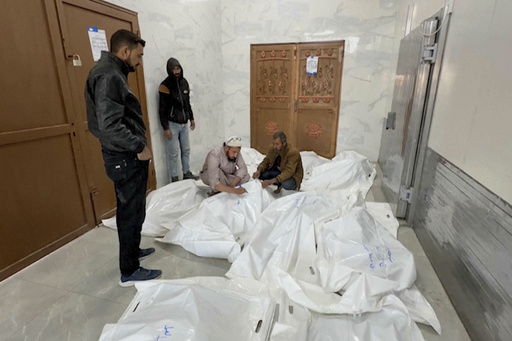Israel executed a series of airstrikes against Iranian targets in the early hours of Saturday, focusing on facilities associated with missile production and surface-to-air missile installations, which have been linked to assaults on Israel. This escalation in hostilities has the potential to heighten tensions between the two nations, both of which are embroiled in ongoing conflicts in the Middle East, including confrontations involving Iranian-backed groups like Hamas in Gaza and Hezbollah in Lebanon.
The Ministry of Health in Lebanon reported staggering figures over the past year, with more than 2,600 individuals losing their lives and around 12,200 injured due to the violence. The ongoing strife in Lebanon has resulted in over 1.2 million people being displaced from their residences, among whom are more than 400,000 children, as stated by the United Nations children’s agency. Since hostilities escalated in September, significant Israeli assaults have led to the deaths of many of Hezbollah’s key leaders.
In Gaza, the situation remains dire, with local health authorities claiming that more than 42,000 Palestinians have died in Israeli offensives, who do not distinguish between combatants and non-combatants. The current conflict took a dramatic turn after an incursion by Hamas militants on October 7, 2023, which breached Israel’s security measures, resulting in approximately 1,200 fatalities, primarily among civilians, alongside the abduction of 250 individuals.
In response to these developments, the Iranian Foreign Ministry denounced the Israeli airstrikes on its military bases, asserting that the nation would retaliate. It labeled the attacks a blatant violation of international laws and the U.N. Charter concerning the sovereignty of countries. The ministry reinforced Iran’s inherent right to self-defense, as detailed in Article 51 of the U.N. Charter, emphasizing its obligation to respond to foreign aggression.
Meanwhile, Israel’s opposition leader, Yair Lapid, commended the military’s efforts but criticized the decision not to target Iran’s more strategic and economic assets. In a post on X, he expressed that Israel could and should have inflicted a more substantial impact on Iran, highlighting that the air operations exhibited strong military capabilities and served as a reminder to Israel’s adversaries of its operational reach.
Reports indicate that the Iranian army disclosed the death of two soldiers during the Israeli strikes, as reported by the state television channel, Al-Alam. Iran stated that the airstrikes were directed at military installations located in the Ilam, Khuzestan, and Tehran provinces, leading to what it described as “limited damage.” However, no imagery was presented to verify the extent of this damage.
In a subsequent statement, the Israeli military claimed to have completed its airstrikes, detailing that its aircraft had “safely returned home.” The military confirmed that the strikes targeted missile manufacturing sites responsible for producing missiles that have posed a direct threat to Israeli citizens. Additionally, they reported attacks on surface-to-air missile arrays and other aerial capabilities that were seen as obstructive to Israel’s operational freedom in the region. They did not, however, provide information regarding the damage resulting from these operations.
Iran, in its response, acknowledged only minimal damage to its military infrastructures. The airstrikes on Saturday were characterized by Israeli officials as a retaliation for a ballistic missile attack that occurred on October 1. This military action, long anticipated by Israeli leadership, unfolds amid a volatile regional landscape, more than a year following the initial Hamas assault on Israel. Since then, Israel has enacted a significant ground operation in the Gaza Strip and has initiated incursions into Lebanon, targeting groups supported by Tehran.


